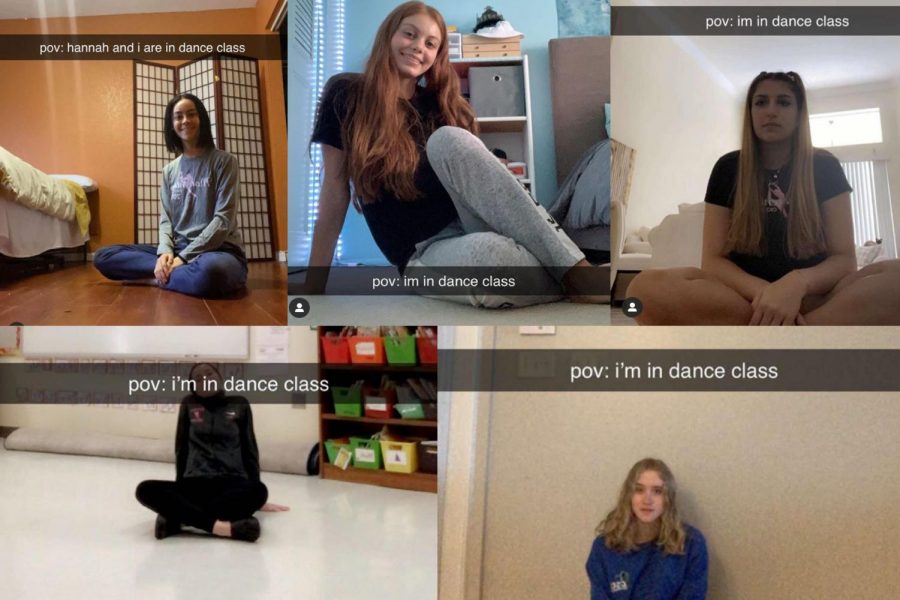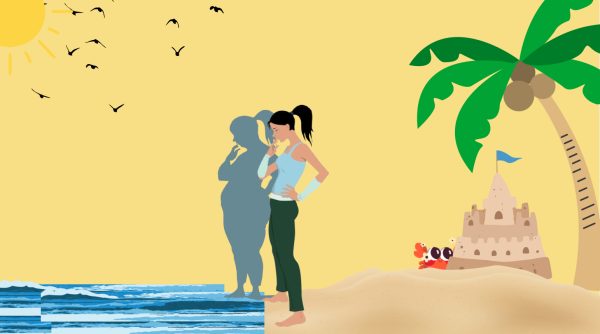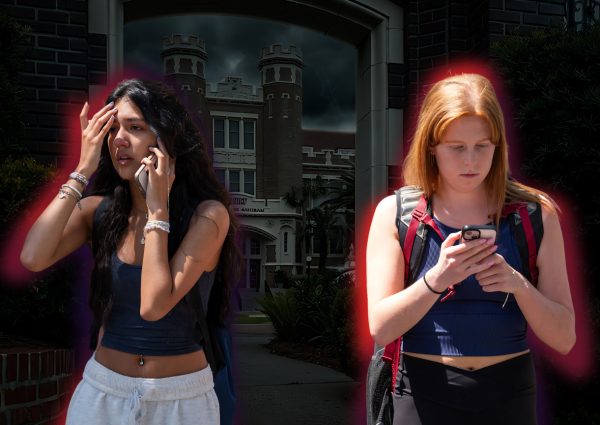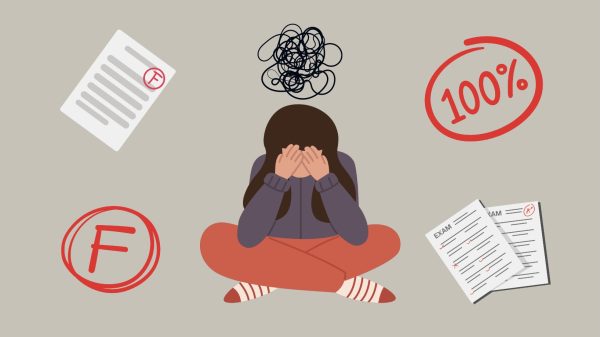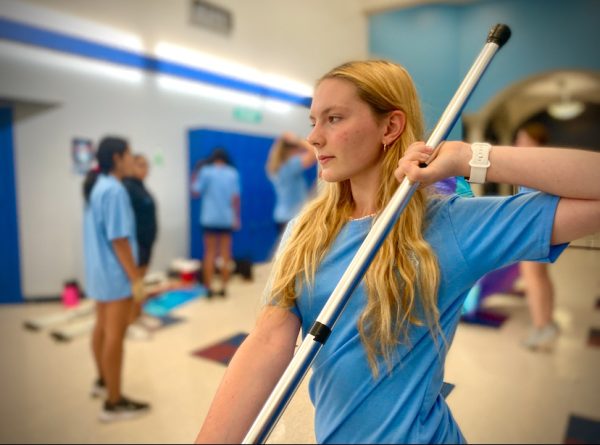The E-Learning Shift: Dance class
Momentum dancers (top left to bottom right) Allyse Doblmeier, Angela Depalma, Mia Tamerian, Hannah Mader, and Kelly Gillan display how their dance class experience functions over Zoom.
It doesn’t come as a surprise that 2020 has brought many drastic changes, and in effect has required tons of adaptability from school faculty, staff, and students. With most Broward schools transitioning to virtual learning, classes must attempt to make e-learning as engaging and as similar to the old times as possible.Today we will be focusing on one category of classes in particular: dance. Every member of Mrs. Lauren Broeckelmann’s dance class has had to find new and creative ways to resume their typical dancing practice. “Zoom was designed for group conference calls, not teaching with music and movement,” said Broeckelmann. “However, I am determined to make the dance class experience as close to the real thing as I possibly can.”
In an exclusive interview, Broeckelmann was able to give us her detailed opinions and struggles with virtual dance classes.
“The most difficult transition is the disconnection I feel with the students. When I’m teaching in person, I think the students feed off of my energy and vice versa. When you are teaching to a bunch of tiny, muted boxes, it is hard to keep the energy up,” said Broeckelmann.
Many of her student’s experienced a similar experience.
“Not having the energy around you makes it harder to have that energy you want so you could dance full out, but I think we all know how to interact with each other well enough to the point where we can lift each other up,” said Angela Depalma, senior Momentum dancer.
Boeckelmann has proposed new and efficient ways to communicate with her dancers. Senior dancer Ann-Deborah Gabriel said “Since we’re all muted and she’s far from the screen, we use hand signals that mean different things. For example, if we can move on, we do a big hand wave; if we’re stuck, we make a big X with our arms,” said Gabriel.
Even something as small as having enough space to dance has been an issue for some.
“Dancing at home is also definitely a struggle! Especially for momentum, you need a lot of space to do the choreography full out,” said Kelly Gillan, junior Momentum dancer. A number of other dancers share the same feelings.
“Yes [it is a struggle] because I have to go to my living room, and my dad and brother are always walking around me,” said senior Momentum dancer Allyse Doblemeier.
Despite the hardships, Broeckelmann still has found herself feeling grateful.
“I am so impressed with how quickly the students have adapted to the whole process of mobile school. I am grateful to have such resilient students!” expressed Broeckelmann.
She ends the interview by sharing her hopes for the future.
“My hope is to keep my students active, engaged and happy,” said Broeckelmann. “I want dance to be the time in the day where they let go, have fun and feel safe to push out of their comfort zones. Nothing makes me happier than to see my students smiling and giving their full energy to my choreography.”

